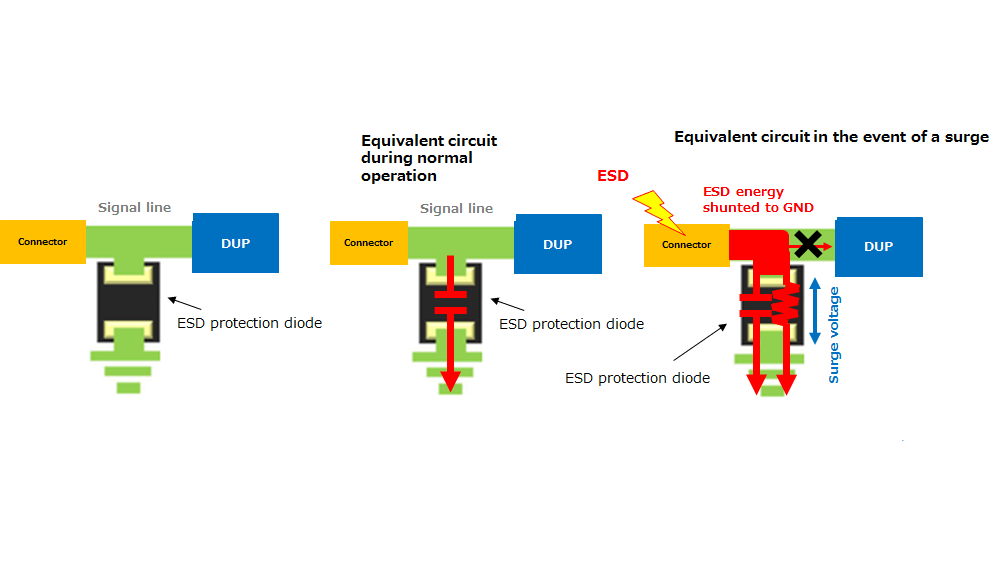- 半導體首頁
-
應用Automotive
Body Electronics
xEV
In-Vehicle Infotainment
Advanced Driver-Assistance Systems (ADAS)
Chassis
IndustrialInfrastructure
BEMS/HEMS
Factory Automation
Commercial Equipment
Consumer/PersonalIoT Equipment
Healthcare
Wearable Device
Mobile
Computer Peripherals
-
產品車用元件
Discrete Semiconductor
Diodes
電晶體
通用邏輯IC
Analog Devices
Digital Devices
Wireless Devices
※
: Products list (parametric search)
功率半導體※
: Products list (parametric search)
隔離器/固態繼電器Photocouplers
Digital Isolators
※
: Products list (parametric search)
MOSFETsIGBTs/IEGTs雙極性電晶體※
: Products list (parametric search)
Diodes※
: Products list (parametric search)
微控制器馬達驅動 ICs智能功率 ICs※
: Products list (parametric search)
電源管理 ICs線性 ICs※
: Products list (parametric search)
通用邏輯 ICs線性影像感測器其他產品其他產品
※
: Products list (parametric search)
-
開發/設計支援
開發 / 設計支援
-
技術知識
- 購買管道
- 型號 & 關鍵字搜尋
- 交叉搜尋
- 參數搜尋
- 線上庫存查詢跟購買
This webpage doesn't work with Internet Explorer. Please use the latest version of Google Chrome, Microsoft Edge, Mozilla Firefox or Safari.
型號需要超過三個文字以上 Search for multiple part numbers fromhere.
The information presented in this cross reference is based on TOSHIBA's selection criteria and should be treated as a suggestion only. Please carefully review the latest versions of all relevant information on the TOSHIBA products, including without limitation data sheets and validate all operating parameters of the TOSHIBA products to ensure that the suggested TOSHIBA products are truly compatible with your design and application.Please note that this cross reference is based on TOSHIBA's estimate of compatibility with other manufacturers' products, based on other manufacturers' published data, at the time the data was collected.TOSHIBA is not responsible for any incorrect or incomplete information. Information is subject to change at any time without notice.
型號需要超過三個文字以上
2-1 Equivalent circuits and benefits

During normal operation
ESD protection diodes are normally placed between signal lines and GND. Therefore, these diodes act as capacitors in a steady state. Since their capacitance and the resistance of the signal lines form lowpass filters (LPFs), ESD protection diodes cause an insertion loss (IL), degrading the quality of signals, depending on their speed (especially the quality of high-speed signals such as USB 3.0 and USB 3.1).
In the event of a voltage surge
When a surge or external noise enters a system via a connector, its impact on the subsequent device (e.g., an IC) greatly depends on the presence or absence of ESD protection diodes. Without ESD protection diodes, all of the surge current flows directly to a sensitive device, causing a malfunction or device destruction. If a circuit has ESD protection diodes, much of the surge current is shunted to GND through them. The dynamic resistance (Rdyn) of an ESD protection diode represents the ease of shunting surge current to GND. ESD protection diodes with lower dynamic current shunt more of the surge current to GND. Such diodes also help reduce the voltage across their dynamic resistance, i.e., the resistance between their terminals (known as clamp voltage). Therefore, ESD protection diodes with lower dynamic resistance allow less surge current to flow to the device under protection (DUP), providing more robust protection for the DUP.
- Prev
- 2/2
2 Basic operations of TVS diodes (ESD protection diodes)
- 1 What is a TVS diode (ESD protection diode)?
- 3 Key electrical characteristics of TVS diodes (ESD protection diodes)
- 4 Selection guidelines for TVS diodes (ESD protection diodes)
- 5 Layout considerations for TVS diodes (ESD protection diodes)
- 6 Absolute maximum ratings of TVS diodes (ESD protection diodes)
- 7 Electrical characteristics of TVS diodes (ESD protection diodes)
Related information
- Product Web Page
TVS Diodes (ESD protection diodes) - Applidcation Notes
Diode - FAQ
TVS diodes (ESD protection diodes) - Parametric searches for all Toshiba TVS diode (ESD protection diodes) produ cts are available here:
Parametric search - Stock Check & Purchase Toshiba TVS diode (ESD protection diodes) here
Stock Check & Purchase


